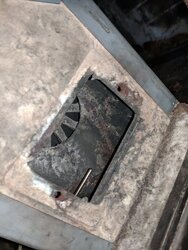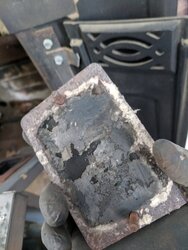Wondering if someone who is familiar with the operation of the ESP might be able to help with this. The steel exhaust access panel that opens to the ESP and exhaust fan always had a little piece of insulation that acted as a gasket when I'd open it to vacuum out the exhaust. That has since deteriorated and fallen apart on this 10 year old stove, so now it's just the bare steel plate covering the hole.
Could this affect the performance of the ESP in any way? Also, does anyone have suggestions on what could be used to replace the old insulation? I believe it's the same material that is wrapped around the insert, a thin white insulation that can be seen in the picture below:


Could this affect the performance of the ESP in any way? Also, does anyone have suggestions on what could be used to replace the old insulation? I believe it's the same material that is wrapped around the insert, a thin white insulation that can be seen in the picture below:



